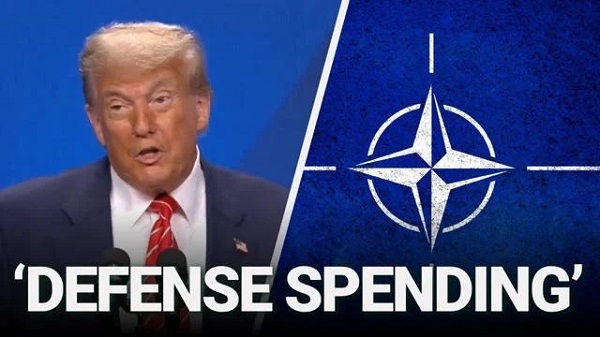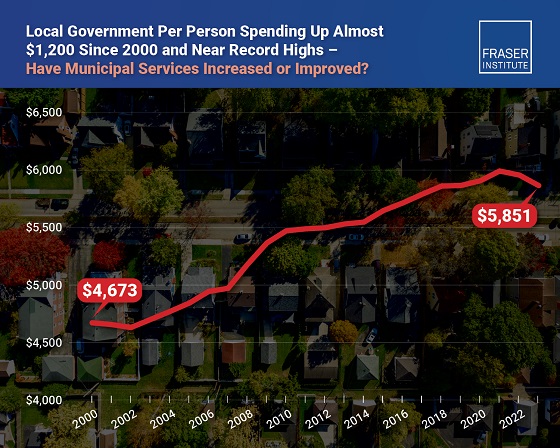Business
Given changes to U.S. policy under Trump, Canada needs to rethink its environmental policies

From the Fraser Institute
By reforming federal climate policy, Canadians could benefit from increased prosperity and increased competitiveness with the U.S., finds a new study published by the Fraser Institute, an independent, non-partisan public policy thinktank.
“As we approach 2030 with no prospect of meeting Canada’s Paris targets, instead of doubling down on costly and misguided policies that will result in continued failure, the federal government should embark on a new course that offers hope for modest climate successes without sacrificing living standards and prosperity,” said Ross McKitrick, Fraser Institute senior fellow and author of Reforming Canada’s Environment Ministry and Federal Environmental Policy.
The study finds that as a result of the new Trump administration quickly reforming U.S. climate policy, Canada risks a widening competitiveness gap with the U.S.
The study identifies five sensible reforms to Canadian climate policy that would improve competitiveness, achieve realistic emission reductions without compromising economic growth and prosperity:
1. Set realistic timelines for achievable improvements in emission intensity.
2. Eliminate the many costly intrusions of climate policy into unrelated policy areas, from banking to homebuilding to competition policy.
3. Make the federal environment ministry an effective and trustworthy source of unbiased, reliable data on Canada’s environment and climate.
4. Push back against the mission creep in multilateral organizations, especially the Intergovernmental Panel on Climate Change.
5. Extinguish in law all forms of climate liability in order to stop nuisance activist lawsuits.
“The federal government’s climate agenda has adversely affected Canadians’ living standards and the country’s prospects for future income growth,” McKitrick said. “Given all the changes occurring in the U.S., now is an appropriate time to reform federal climate policy to be more effective, and to better serve the needs of Canadians.”
Reforming Canada’s Environment Ministry and Federal Environmental Policy
- With the start of a new Trump administration in the US and the prospects of a change in government in Canada, it is time for a reassessment of how Canada manages its environment and climate change portfolios.
- The US has swung dramatically in the direction of promoting energy abundance and downplaying or setting aside climate goals. Canada risks a widening competitiveness gap with the US if we do not respond appropriately.
- This study outlines key reforms to federal climate policy and the structure of the federal environment ministry, including:
- Eliminating the current national greenhouse gas (GHG) emissions targets and replacing them with more realistic ones that can be achieved without compromising economic growth and industrial competitiveness.
- Eliminating the many costly regulatory intrusions of climate policy into unrelated areas, from banking to homebuilding to competition policy, and focusing solely on pursuing cost-effective GHG emissions reductions.
- Transforming the federal environment ministry into an effective and trustworthy source of unbiased, reliable data on Canada’s environment and climate, rather than relying heavily on speculative climate models.
- Pushing back against the mission creep in multilateral organizations, especially the Intergovernmental Panel on Climate Change, and working with other like-minded countries, such as the United States, to return these organizations to their historical mandates.
- Extinguishing in law all forms of climate liability associated with greenhouse gas emissions to prevent activist-driven nuisance lawsuits.
Alberta
Pierre Poilievre – Per Capita, Hardisty, Alberta Is the Most Important Little Town In Canada

From Pierre Poilievre
Business
Why it’s time to repeal the oil tanker ban on B.C.’s north coast

The Port of Prince Rupert on the north coast of British Columbia. Photo courtesy Prince Rupert Port Authority
From the Canadian Energy Centre
By Will Gibson
Moratorium does little to improve marine safety while sending the wrong message to energy investors
In 2019, Martha Hall Findlay, then-CEO of the Canada West Foundation, penned a strongly worded op-ed in the Globe and Mail calling the federal ban of oil tankers on B.C.’s northern coast “un-Canadian.”
Six years later, her opinion hasn’t changed.
“It was bad legislation and the government should get rid of it,” said Hall Findlay, now director of the University of Calgary’s School of Public Policy.
The moratorium, known as Bill C-48, banned vessels carrying more than 12,500 tonnes of oil from accessing northern B.C. ports.
Targeting products from one sector in one area does little to achieve the goal of overall improved marine transport safety, she said.
“There are risks associated with any kind of transportation with any goods, and not all of them are with oil tankers. All that singling out one part of one coast did was prevent more oil and gas from being produced that could be shipped off that coast,” she said.
Hall Findlay is a former Liberal MP who served as Suncor Energy’s chief sustainability officer before taking on her role at the University of Calgary.
She sees an opportunity to remove the tanker moratorium in light of changing attitudes about resource development across Canada and a new federal government that has publicly committed to delivering nation-building energy projects.
“There’s a greater recognition in large portions of the public across the country, not just Alberta and Saskatchewan, that Canada is too dependent on the United States as the only customer for our energy products,” she said.
“There are better alternatives to C-48, such as setting aside what are called Particularly Sensitive Sea Areas, which have been established in areas such as the Great Barrier Reef and the Galapagos Islands.”
The Business Council of British Columbia, which represents more than 200 companies, post-secondary institutions and industry associations, echoes Hall Findlay’s call for the tanker ban to be repealed.
“Comparable shipments face no such restrictions on the East Coast,” said Denise Mullen, the council’s director of environment, sustainability and Indigenous relations.
“This unfair treatment reinforces Canada’s over-reliance on the U.S. market, where Canadian oil is sold at a discount, by restricting access to Asia-Pacific markets.
“This results in billions in lost government revenues and reduced private investment at a time when our economy can least afford it.”
The ban on tanker traffic specifically in northern B.C. doesn’t make sense given Canada already has strong marine safety regulations in place, Mullen said.
Notably, completion of the Trans Mountain Pipeline expansion in 2024 also doubled marine spill response capacity on Canada’s West Coast. A $170 million investment added new equipment, personnel and response bases in the Salish Sea.
“The [C-48] moratorium adds little real protection while sending a damaging message to global investors,” she said.
“This undermines the confidence needed for long-term investment in critical trade-enabling infrastructure.”
Indigenous Resource Network executive director John Desjarlais senses there’s an openness to revisiting the issue for Indigenous communities.
“Sentiment has changed and evolved in the past six years,” he said.
“There are still concerns and trust that needs to be built. But there’s also a recognition that in addition to environmental impacts, [there are] consequences of not doing it in terms of an economic impact as well as the cascading socio-economic impacts.”
The ban effectively killed the proposed $16-billion Eagle Spirit project, an Indigenous-led pipeline that would have shipped oil from northern Alberta to a tidewater export terminal at Prince Rupert, B.C.
“When you have Indigenous participants who want to advance these projects, the moratorium needs to be revisited,” Desjarlais said.
He notes that in the six years since the tanker ban went into effect, there are growing partnerships between B.C. First Nations and the energy industry, including the Haisla Nation’s Cedar LNG project and the Nisga’a Nation’s Ksi Lisims LNG project.
This has deepened the trust that projects can mitigate risks while providing economic reconciliation and benefits to communities, Dejarlais said.
“Industry has come leaps and bounds in terms of working with First Nations,” he said.
“They are treating the rights of the communities they work with appropriately in terms of project risk and returns.”
Hall Findlay is cautiously optimistic that the tanker ban will be replaced by more appropriate legislation.
“I’m hoping that we see the revival of a federal government that brings pragmatism to governing the country,” she said.
“Repealing C-48 would be a sign of that happening.”
-

 Crime2 days ago
Crime2 days agoNational Health Care Fraud Takedown Results in 324 Defendants Charged in Connection with Over $14.6 Billion in Alleged Fraud
-

 Health2 days ago
Health2 days agoRFK Jr. Unloads Disturbing Vaccine Secrets on Tucker—And Surprises Everyone on Trump
-

 Business1 day ago
Business1 day agoElon Musk slams Trump’s ‘Big Beautiful Bill,’ calls for new political party
-

 Business14 hours ago
Business14 hours agoWhy it’s time to repeal the oil tanker ban on B.C.’s north coast
-

 Censorship Industrial Complex1 day ago
Censorship Industrial Complex1 day agoGlobal media alliance colluded with foreign nations to crush free speech in America: House report
-

 International21 hours ago
International21 hours agoCBS settles with Trump over doctored 60 Minutes Harris interview
-

 Business14 hours ago
Business14 hours agoLatest shakedown attempt by Canada Post underscores need for privatization
-

 Energy13 hours ago
Energy13 hours agoIf Canada Wants to be the World’s Energy Partner, We Need to Act Like It







